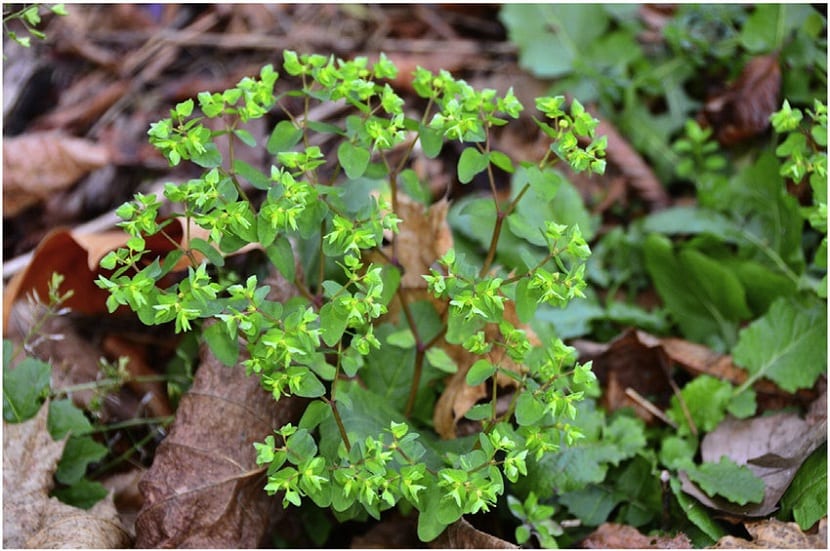
Today we are going to talk about a phanerogamic species that belongs to the Euphorbiaceae family. It's about the Euphorbia peplus. It is also known by the common name of milk spike. It is a plant native to Macaronesia and with a wide area of distribution. Other common names by which it is known are lechecina, lecheriega, peplo, tesula, tomagallos, poisonous basil, coyote grass, etc.
In this article we are going to show you the characteristics, the main uses and the care that the Euphorbia peplus.
Key features
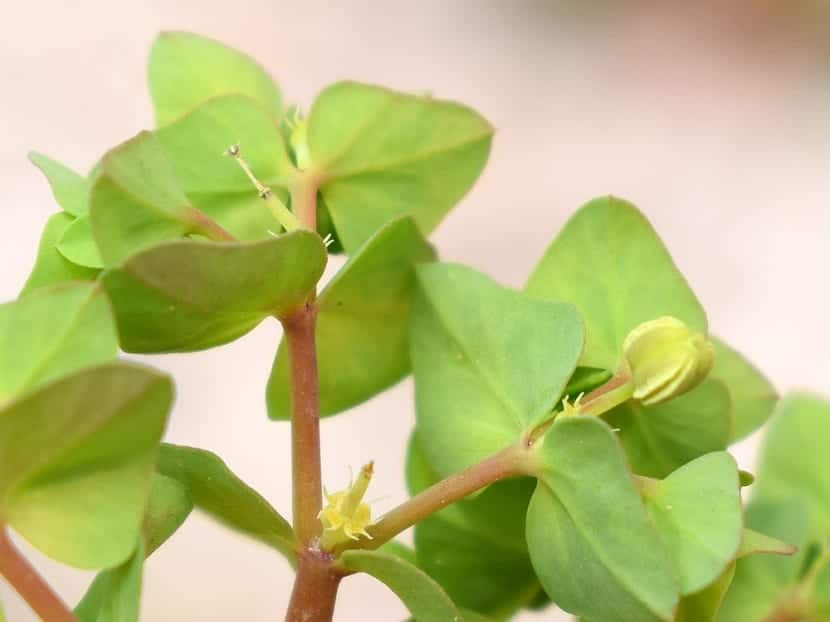
This plant grows around the grasses of other annuals. We can find them in grasslands, humid and temperate areas, as long as it is in a height between sea level and 1600 meters. The main habitat of this species is gardens, scrubby areas, flower beds and orchards. Regarding its area of distribution, we find it with a greater abundance in five archipelagos. These archipelagos are close to the African continent and are the Azores, the Canary Islands, Cape Verde, Madeira and the Wild Islands. All these places are in the Mediterranean region.
It is a direct plant that has a green to yellowish color. They are usually between 10 and 50 centimeters tall. Its stem is quite branched from the base to the growth bud. They do not have too large leaves, but are found throughout the stem on fine petioles that are between one and three centimeters long. The flowering period of this plant goes from June to September, as long as it is in the Mediterranean region. If we go this plant to another type of climate it is possible that its flowering is modified depending on the temperatures present at all times.
The leaves have an alternate arrangement. The petiole is usually short. One of the reasons why animals do not consume this plant is because it has a typical latex of this species. This latex gives it an unpleasant taste and not at all edible. As we have mentioned before, the stem is quite branched. The branches are of the ascending type and it is quite dense. The fruit are capsules only two mm long and divided into three parts.
Euphorbia peplus requirements
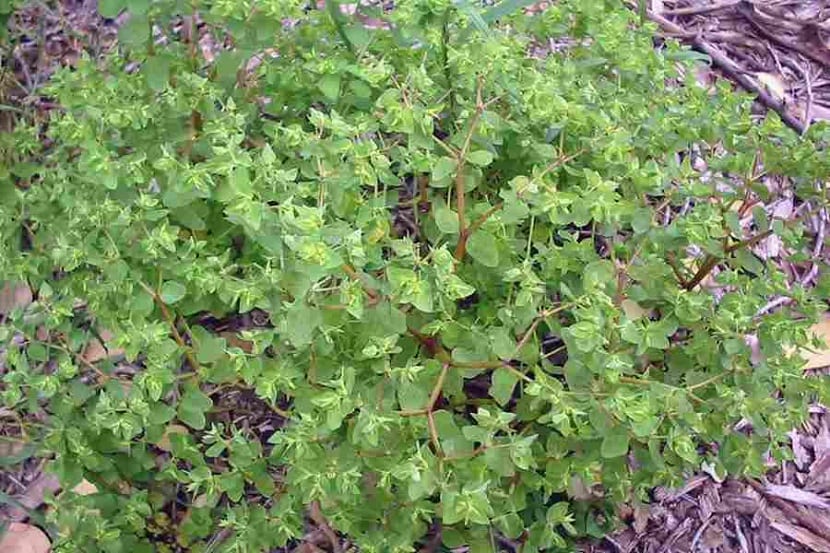
To take care of this plant, we must take into account some main aspects. First of all, it is to know the location that this plant should have in the garden. It needs to be in full light to grow. Although it supports the shade well, if we want it to have a good flowering it is better to place it in a place where it has enough hours of light a day. You also need a room temperature that is warm.
Its annual life cycle is reduced by: its growth begins in late autumn, develops throughout the winter, blooms in spring and part of the summer until the end of September, where it loses its leaves again and the cycle begins again. . The Euphorbia peplus it is quite a delicate plant. In natural ecosystems, they tend to grow on land that has been removed and on the edges of roads.
As for the soil and the substrate that can best keep this plant in good condition, we must bear in mind that it must be moderately serious. It is not a plant that tolerates soils with a high level of humidity. Therefore, the indicator of irrigation is that the soil is almost completely dry. The soil pH should be between 5,5 and 8. In addition, it is interesting that the soil has a good supply of nitrogen that indicates richness of nutrients. In this way, the plant will be able to grow in good conditions and will have an adequate flowering.
It needs sandy and calcareous soils. He's quite picky about nutrients.
Irrigation and reproduction of Euphorbia peplus
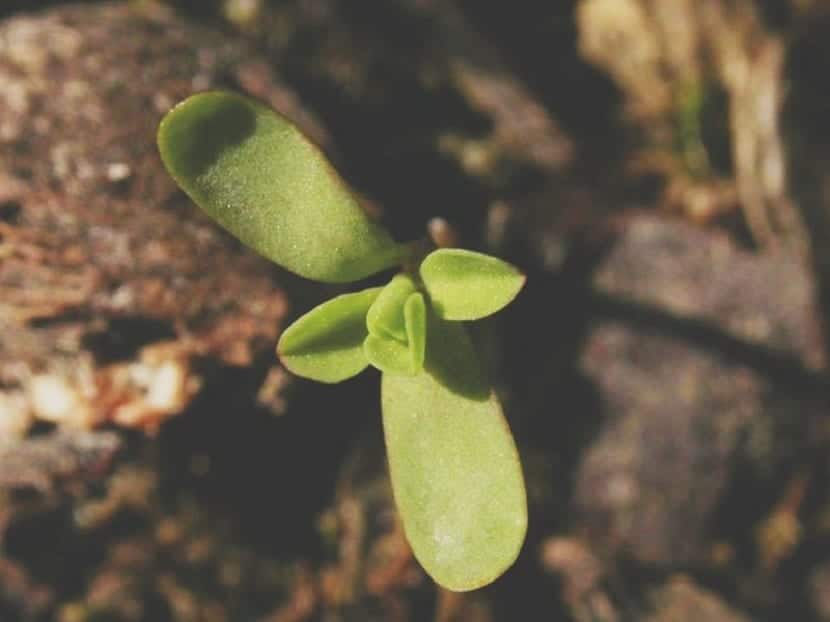
As we have seen before, it is a plant that does not need too much watering. The most advisable thing is to have one watering a week. If our climate is too dry and the soil does not hold any moisture, a second time a week for watering may be necessary. Another important aspect to take into account is the presence of good drainage. So that the irrigation water is not stored we need the soil to have good drainage. Otherwise, the plant will not last long.
The indicator that we must water again is to leave the substrate dry between watering and watering, avoiding sudden changes in temperature. It is advisable that the temperature is always warm.
Regarding the reproduction of the Euphorbia peplus, we can say that they can be propagated both by seeds and by cuttings. The seeds are white or gray in color. Its shape is ovoid with slightly hexagonal section. They usually measure between 1 and 1.7 mm.
Medicinal properties
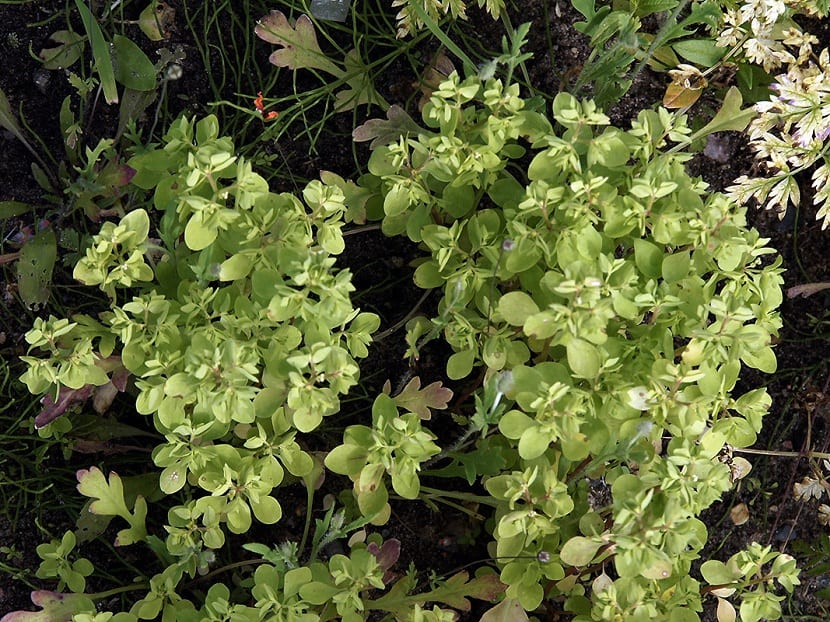
This plant has quite recognized medicinal uses. However, if we do not have the necessary prevention it can become a highly toxic plant. It can be a medicinal plant as well as a poisonous plant. It is the dose that determines that the plant will be one or the other. The off-white latex is what makes it possible to be used in the treatment of skin lesions such as warts and sun spots. It is also used for the treatment of corns.
Another part of the plant has been used, expectorant, anthelmitic, antipyretic and anti-inflammatory. But it must be taken into account that in this latex it can be irritating and damage the skin, eyes and mucous membranes. To be able to use it well, it is necessary to know the concentrations and quantities. If not used properly, it can cause alterations in the liver, kidneys, produce stomach pain, diarrhea, vomiting and even cause heart attacks.
The good thing about this plant is that the components of its milky sap are being studied to be able to treat different types of skin cancer, warts, sun spots and even leukemia.
I hope that with this information you can learn more about the care and properties of the Euphorbia peplus.